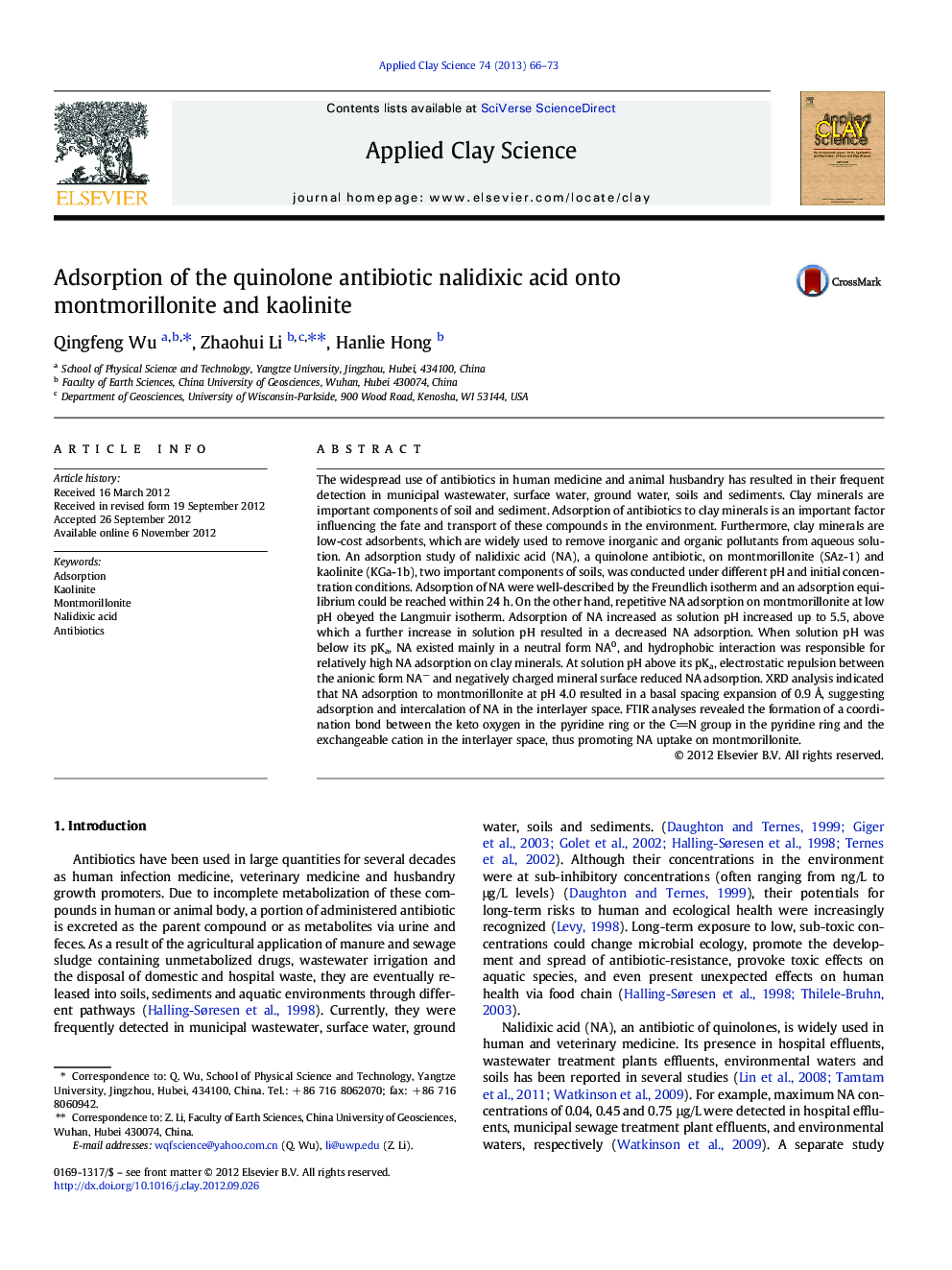| کد مقاله | کد نشریه | سال انتشار | مقاله انگلیسی | نسخه تمام متن |
|---|---|---|---|---|
| 1695059 | 1519096 | 2013 | 8 صفحه PDF | دانلود رایگان |

The widespread use of antibiotics in human medicine and animal husbandry has resulted in their frequent detection in municipal wastewater, surface water, ground water, soils and sediments. Clay minerals are important components of soil and sediment. Adsorption of antibiotics to clay minerals is an important factor influencing the fate and transport of these compounds in the environment. Furthermore, clay minerals are low-cost adsorbents, which are widely used to remove inorganic and organic pollutants from aqueous solution. An adsorption study of nalidixic acid (NA), a quinolone antibiotic, on montmorillonite (SAz-1) and kaolinite (KGa-1b), two important components of soils, was conducted under different pH and initial concentration conditions. Adsorption of NA were well-described by the Freundlich isotherm and an adsorption equilibrium could be reached within 24 h. On the other hand, repetitive NA adsorption on montmorillonite at low pH obeyed the Langmuir isotherm. Adsorption of NA increased as solution pH increased up to 5.5, above which a further increase in solution pH resulted in a decreased NA adsorption. When solution pH was below its pKa, NA existed mainly in a neutral form NA0, and hydrophobic interaction was responsible for relatively high NA adsorption on clay minerals. At solution pH above its pKa, electrostatic repulsion between the anionic form NA− and negatively charged mineral surface reduced NA adsorption. XRD analysis indicated that NA adsorption to montmorillonite at pH 4.0 resulted in a basal spacing expansion of 0.9 Å, suggesting adsorption and intercalation of NA in the interlayer space. FTIR analyses revealed the formation of a coordination bond between the keto oxygen in the pyridine ring or the CN group in the pyridine ring and the exchangeable cation in the interlayer space, thus promoting NA uptake on montmorillonite.
► Uptake of nalidixic acid on clay minerals was much lower than ciprofloxacin.
► Solution pH had strong influence on nalidixic acid adsorption.
► Hydrophobic interaction and coordinated bonding mainly responsible for adsorption.
Journal: Applied Clay Science - Volume 74, April 2013, Pages 66–73